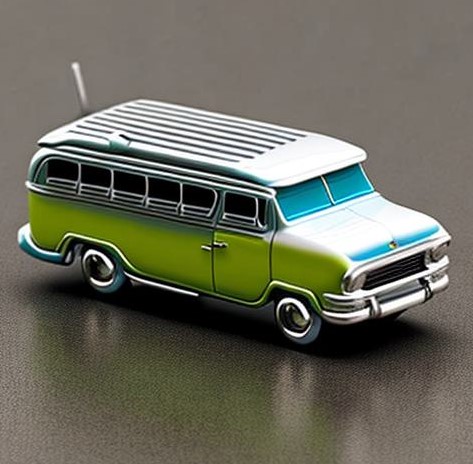Installing a USB port in a campervan is a useful addition for charging your devices while on the road and is an incredibly efficient way to do so, far more efficient than using an inverter.
Step by step guide to installing USB ports
Here is a step-by-step guide on how to install a USB port in your campervan using 12V electrics, a house battery (leisure battery) , and a fuse box:
Materials needed:
- USB port
- 12V wiring
- Fuse box
- House battery (I have this one)
- Crimp connectors
- Wire stripper
- Screwdriver
- Drill
- Drill bit
Step 1: Plan the location of the USB port.
Before you start the installation process, decide on the location where you want to install the USB port. It is advisable to install it in a location where it is easily accessible and away from any water sources.
When deciding where to install USB ports in your campervan, there are a few factors to consider:
- Accessibility: You’ll want to choose a location that is easily accessible from various parts of the campervan, such as the bed, seating area, and kitchen.
- Power source: USB ports require power, so you’ll need to make sure you have access to a power source in the chosen location. Consider whether you want to install the ports near an existing power source, or if you’ll need to run additional wiring.
- Aesthetics: You’ll want to choose a location that is aesthetically pleasing and doesn’t detract from the overall design of your campervan.
With those factors in mind, some popular locations for USB port installations in campervans include:
- Near the bed: This is a convenient location for charging devices overnight while you sleep.
- In the kitchen: Installing USB ports near the kitchen allows you to charge devices while cooking or preparing food.
- In the seating area: If you have a seating area in your campervan, installing USB ports here allows you to charge devices while lounging or hanging out.
Ultimately, the best location for USB ports in your campervan will depend on your specific needs and preferences. Take some time to consider how you’ll be using your campervan, and choose a location that makes the most sense for your lifestyle.
I always choose to have mine as close to the battery as possible, just to save on wiring costs!
Step 2: Install the fuse box.
Install a fuse box near the house battery to protect the wiring from overloading. Remember, fuses blow in order to stop the wiring from melting and catching fire, it doesn’t protect the USB port. This is why it’s important to choose the right size wire and fuse.
For installing USB ports on a 12v system in a campervan, it is recommended to use a high-quality copper wire of at least 16-gauge thickness to ensure reliable power transmission.
The wire should be rated for a minimum of 10 amps to safely handle the load of charging devices. It is also important to use stranded wire instead of solid wire, as stranded wire is more flexible and less likely to break from vibrations while driving.
It’s also important to use wire connectors that are compatible with your specific wire size to ensure a secure and safe connection. Remember to route the wire away from any heat sources or areas with potential abrasion or pinch points to avoid damage to the wire.
Step 3: Install the house/leisure battery.
The house battery powers the USB port. You don’t want to be using the van’s battery to power your USB ports.
Although some vehicles come with them installed, they’re really only meant to be used whilst driving. Using them whilst stationary will eventually drain your vehicle’s battery.
Leisure, or house, batteries are designed differently from normal vehicle batteries.
- Purpose: The primary purpose of a vehicle battery is to start the engine and power the vehicle’s electrical systems, while a leisure battery is designed to power appliances and accessories inside the vehicle, such as lights, refrigerators, and audio systems.
- Design: Vehicle batteries are designed to deliver a short burst of high current to start the engine, while leisure batteries are designed to provide a steady stream of power over a longer period of time.
- Capacity: Leisure batteries generally have a higher capacity than vehicle batteries, as they need to provide power to appliances and accessories for extended periods of time.
Mount the house battery in a secure location close to the fuse box. Connect the negative cable to the campervan’s metal body and the positive cable to the fuse box.
Don’t forget that your new battery will need to be charged either before you go on your trip, or you can hook it up to your vehicle’s engine (via split charger or dc to dc charger) and recharge it whilst driving (or even get a solar system to charge it!)
Step 4: Wire the USB port.
Cut a length of 12V wiring that is long enough to connect the USB port to the fuse box. Strip the ends of the wires and crimp connectors to the USB port’s positive and negative terminals.
Step 5: Connect the USB port to the fuse box.
Connect the positive wire from the USB port to the fuse box’s positive terminal. Connect the negative wire from the USB port to the fuse box’s negative terminal.
Step 6: Test the USB port.
Turn on the campervan’s power and check if the USB port is working correctly by plugging in a device.
Step 7: Secure the wiring.
Once you have tested the USB port, secure the wiring with cable ties and clips to prevent it from moving around.
That’s it! You have successfully installed a USB port in your campervan using 12V electrics, a house battery, and a fuse box.
How many USB ports can I install in my campervan from one battery?
The number of USB ports that you can install in your campervan from one battery depends on several factors, such as the capacity of the battery, the power requirements of the USB ports, and the usage of other appliances and accessories in the campervan.
To determine how many USB ports you can install, you’ll need to calculate the power requirements of the USB ports and compare that to the capacity of your battery.
Most USB ports draw between 0.5 and 2.4 amps of current, depending on the charging speed and the type of device being charged. For example, a standard USB port on a laptop might draw 0.5 amps, while a fast-charging USB port for a smartphone might draw 2.4 amps.
To calculate the power requirements of the USB ports, multiply the amperage by the voltage. Most USB ports are designed to work with a 5-volt power supply, so you can use that as the voltage in your calculation. For example, a USB port that draws 2.4 amps would require 12 watts of power (2.4 amps x 5 volts).
Once you’ve calculated the power requirements of the USB ports, you’ll need to compare that to the capacity of your battery. Most leisure batteries for campervans have a capacity of between 50 and 200 amp-hours, depending on the size and type of battery. To determine how many USB ports you can install, divide the capacity of the battery by the total power requirements of the USB ports.
For example, if you have a 100-amp hour battery and your USB ports draw a total of 24 watts (4.8 amps), you would be able to power the USB ports for approximately 20 hours (100 amp-hours / 4.8 amps = 20.8 hours).
It’s important to note that other appliances and accessories in your campervan will also draw power from the battery, so you’ll need to take those into account when calculating how many USB ports you can install.
If you have a refrigerator, lights, or other high-power devices, you may need to install a larger battery or limit the number of USB ports you install to avoid draining the battery too quickly.
Should I use a fuse for the USB ports? If yes, what kind of fuse?
Yes, it is recommended to use a fuse for the USB ports in your campervan to protect against short circuits and overloads that could damage the wiring or devices connected to the USB ports.
The type of fuse you should use depends on the amperage rating of the USB ports and the wiring you are using. Most USB ports draw between 0.5 and 2.4 amps of current, so you’ll want to choose a fuse that is rated slightly higher than the maximum amperage draw of your USB ports.
For example, if your USB ports draw a maximum of 2.4 amps, you could use a 3-amp fuse to protect the wiring and devices. If your USB ports draw less current, you could use a lower-rated fuse.
In addition to the amperage rating, you’ll also want to choose a fuse that is compatible with the wiring you are using. Common types of fuses include blade fuses, glass fuses, and resettable fuses. Blade fuses are commonly used in automotive and RV applications and are available in various amperage ratings.
Glass fuses are also common and are typically used for low-power applications. Resettable fuses, also known as circuit breakers, are designed to automatically reset when the current draw falls below a certain level.
When installing the fuse, make sure to place it as close as possible to the battery or power source, and use appropriate wire gauge and connectors for the amperage rating of the fuse. It’s also a good idea to keep spare fuses on hand in case of a blown fuse.
How do I troubleshoot any issues with the USB ports after installation?
If you experience issues with your USB ports after installation, there are a few troubleshooting steps you can take to identify and resolve the problem:
- Check the wiring: Make sure that all the wiring connections are secure and that there are no loose or damaged wires. Check the wiring diagram and make sure that the wiring is connected correctly.
- Check the fuse: If the USB ports are not receiving power, check the fuse to see if it is blown. Replace the fuse if necessary.
- Check the power source: Make sure that the battery is fully charged and that the voltage is within the recommended range. If the battery voltage is too low, the USB ports may not receive enough power to function properly.
- Check the devices: Make sure that the devices you are trying to charge are compatible with the USB ports and that they are functioning properly. Try connecting a different device to the USB port to see if the problem is with the device or the port.
- Test the USB ports: Use a multimeter to test the voltage and current output of the USB ports. If the voltage or current is not within the recommended range, there may be an issue with the USB ports or the wiring.
- Seek professional help: If you are unable to identify and resolve the issue, seek help from a professional electrician or mechanic who is familiar with campervan electrical systems.
By following these steps, you should be able to troubleshoot any issues with your USB ports and get them working properly.
AFFILIATE DISCLAIMER
The USBWOW website is supported by our visitors. Some of the product links on this website are through affiliate schemes such as Amazon. This means that I earn a small commission if you choose to purchase something at no extra cost to yourself.

